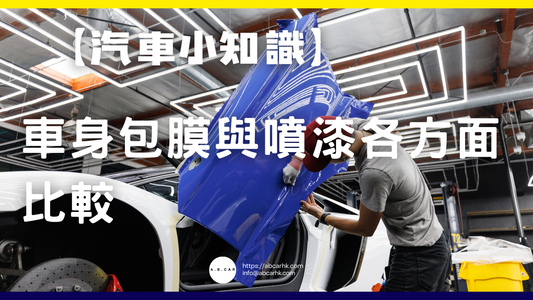[Road Trivia] What do the common "S-shaped" parking spaces in Hong Kong mean?

Anyone living or driving in Hong Kong, especially new drivers or those learning to drive, has undoubtedly heard of the term "S-shaped parking spaces." Whether at driving schools, government car parks, or even private housing estates, you're likely to encounter these spaces. What exactly are S-shaped parking spaces? What's the significance of their design? Why are they so common in Hong Kong? What are some driving tips and precautions? Today, we'll take a detailed look at this unique parking phenomenon in Hong Kong!
1. What is an S-shaped parking space?
"S-shaped parking spaces" are a colloquial term for angled parking spaces, specifically those arranged at an angle (usually 45, 60, or 75 degrees) rather than in a straight line . They get their name from the way they appear to be snaking "S"s from a distance, or because the parking route resembles an S.
Sometimes, "S-type parking" in driving schools also refers to the "S-shaped route reversing into the space" exercise used for driving tests, but in the daily context of Hong Kong, it more often refers to angled parking spaces .
2. Design principle of S-shaped parking space
1. Extreme space efficiency
- Hong Kong faces high land prices, a shortage of parking spaces, and limited parking spaces. Angled parking spaces make more efficient use of limited space than right-angle parking (90 degrees), allowing more parking spaces to be accommodated within the same aisle.
- The angled design eliminates the need for large steering angles when maneuvering the vehicle into and out of the parking space, reducing the risk of collision with oncoming vehicles and making it particularly suitable for narrow passages.
2. Improve parking efficiency
- Angle parking is suitable for one-way driving. The driver only needs to turn the steering wheel lightly to park. The parking process naturally forms an S-shaped path. It is easier and smoother than right-angle parking and is especially friendly to novices.
- The one-way design reduces oncoming vehicles and improves safety.
3. Reduce “parking blind spots”
- The S-shaped parking space makes it easier for drivers to control the left and right distance when parking, reducing the chances of crossing the boundary and causing collisions.
- The front of the car is designed to face outwards, providing a better view when leaving.
3. Why is it particularly common in Hong Kong?
1. Parking lot design restrictions
- Most car parks in Hong Kong (especially those in older shopping malls and housing estates) have low ceilings, dense columns and narrow passages.
- Angle parking allows the vehicle to be closer to the wall or column, which greatly improves space utilization.
2. High parking demand
- Hong Kong has a large number of drivers and a shortage of parking spaces, so angled parking can make the most of every inch of space.
- Some parking lots even deliberately design "reverse S-shaped" parking (i.e. enter from the front and exit from the back) to facilitate traffic flow during peak hours.
3. Driving test culture
- The "S-type parking" part of the Hong Kong driving test has long been the most troublesome part for novice drivers. Many driving schools use angled parking spaces for teaching exercises, further promoting the popularity of S-type parking.
4. Advantages and disadvantages of S-shaped parking spaces
advantage
- Easy to park : one less turn than right-angle parking, especially suitable for novices.
- Good visibility : It is safer to leave when the front of the car is facing outwards.
- Reduce collisions : There are natural angles between parking spaces to reduce the risk of collisions when opening the door.
- High space efficiency : more cars can be accommodated in the same area.
shortcoming
- Only suitable for one-way driving : it is difficult to enter the parking space in the opposite direction and may even block the passage.
- Pay attention to the lines when parking : it is easy to park crookedly at an angle, so pay attention to the white lines on both sides.
- Long vehicles are more difficult to park : SUVs and seven-seater vehicles with long bodies require more precision to park at angles.
5. Practical skills and editor tips
1. Observe before entering the position
- Make sure the lane is one-way and do not drive against the flow of traffic.
- Leave enough space (about 1 to 1.5 parking spaces) before starting to steer.
2. Control your speed
- Although it is easy to park at an angle, you still need to move slowly to avoid parking too fast and causing it to be crooked.
3. Use rearview mirror/reversing camera
- Most modern cars have reversing cameras. When parking at an angle, pay attention to the white lines on the left and right to ensure you do not cross the boundary.
4. The front of the car faces outward
- Most S-shaped parking lots recommend exiting with your head out and entering with your tail in, to allow for a better view when leaving the lot.
5. Be careful when you're out of position
- When leaving an angled parking space, pay attention to oncoming vehicles and pedestrians, especially blind spots.
6. The difference between the "S-shaped pass" in the driving test and the actual S-shaped parking
- The "S-shaped reverse parking" in the driving test is a simulation of real-life angled parking, but the requirements are stricter when taking the license test. You cannot touch the line or park too many times.
- In real-life daily parking, although fine-tuning is allowed, you still need to pay attention to safety and courtesy.
7. Common Misunderstandings and Interesting Facts
-
Myth 1: "S-parking must be extremely difficult!"
In fact, diagonal parking is easier than right-angle parking and is more friendly to novices. -
Myth 2: "Do I have to reverse to park in an S-shaped space?"
Not necessarily. Some angled parking lots are designed for easier front entry, but most people are used to reversing into the space. - Sharing an interesting story : The editor was once in the car park of an old housing estate. The angled parking space was extremely narrow. A novice driver had to "practice until he sweated" before he successfully parked. However, an experienced driver next to him parked in three seconds. His proficiency was admirable.
8. Summary
S-shaped parking spaces (angled parking spaces) are the ultimate in smart parking space utilization in Hong Kong.
It is a response to Hong Kong's land scarcity and fierce competition for parking spaces, and is also a design that is friendly to novice drivers. Although diagonal parking seems simple, it still requires skill and experience to park neatly and steadily.
Next time you park your car, take a closer look at the thoughtful design of this "S-shaped" design, improve your parking skills, and become a true "parking expert"!
If you want to learn more parking skills and overcome the difficulties in the driving test, please leave a message and the editor will teach you in detail!



